1974 is an important year for the gaming hobby. It is the year that
Dungeons & Dragons was introduced, the original RPG from which all other RPGs would ultimately be derived and the original RPG from which so many computer games would draw for their inspiration. It is fitting that the current owner of the game, Wizards of the Coast, released the new version,
Dungeons & Dragons, Fifth Edition, in the year of the game’s fortieth anniversary. To celebrate this, Reviews from R’lyeh will be running a series of reviews from the hobby’s anniversary years, thus there will be reviews from 1974, from 1984, from 1994, and from 2004—the thirtieth, twentieth, and tenth anniversaries of the titles. These will be retrospectives, in each case an opportunity to re-appraise interesting titles and true classics decades on from the year of their original release.
—oOo—
 Call of Cthulhu
Call of Cthulhu was first published in 1981. Written by Sandy Petersen, it is famously, the roleplaying game based upon the works and creations of American horror writer, H.P. Lovecraft, drawing upon the adage, “The oldest and strongest emotion of mankind is fear, and the strongest kind of fear is fear of the unknown.” from his own essay, ‘Supernatural Horror in Literature’. Indeed, it is the first roleplaying game to so as its sole focus—other roleplaying games and supplements included the creatures of Lovecraft’s Mythos within their pages, but not in the way that
Call of Cthulhu does. The roleplaying game places the action—and by action, mostly investigation—in Lovecraft’s own period of the Jazz Age, the nineteen twenties, and has ordinary men and women investigate the machinations and conspiracies of creatures and entities best left unknown to man, the creatures and entities of the Cthulhu Mythos, as well as their all too human cultists and acolytes, and if not save the world in the long term, at least save the world for now. In doing so, their bravery in the face of Cosmic Horror, will remain unknown and go unrewarded save the knowledge that mankind is safe—for now, for ultimately the stars will come right, and Cthulhu will rise from where lies dreaming deepest R’lyeh to reclaim what was once his, along with a host of other aliens and beings beyond our understanding who regard Humanity as nothing more than an infestation—if they do at all. However, their investigations will see them delve into secret places, peruse and study ancient tomes, learn blasphemous knowledge and incantations, and see things and beings best left unseen, all of which might drive them insane, such is the nature of the truth about the world and the cosmos which has long been forgotten.
An Investigator in
Call of Cthulhu has nine attributes—Strength, Constitution, Size, Intelligence, Power, Dexterity, Appearance, Education, and Sanity. Of these, Sanity is actually derived from the Investigator’s Power, and plays a major role in the roleplaying game, whilst Education determines the number of points a player has to assign to the skills granted by his Investigator’s Occupation. This Occupation can be Antiquarian/Historian, Author, Dilettante, Doctor, Journalist, Lawyer, Professor, Parapsychologist, and Private Eye (the choices available will greatly expand with subsequent editions and supplements), granting skills such as Anthropology, Archaeology, History, Library Use, Occult, Psychoanalysis, Psychology, Read/Write Other Language, and Speak Other Language for the Parapsychologist occupation. In addition, an Investigator’s Intelligence determines the number of points a player has to assign to personal interest skills.
The skills themselves are very modern and geared towards the investigative playing style of the game. Thus Library Use for conducting in libraries and newspaper morgues, Read/Write Latin or Ancient Greek for reading ancient or Mythos related tomes, Psychology for determining if a potential cultist is lying or even insane, Credit Rating for getting a loan or moving in the right social circles, and so on. There are combat skills too, such as Handgun or Fist, but these are always reliable in play, since many of the Mythos creatures are immune to their effects. One notable skill is Cthulhu Mythos, which represents an Investigator’s knowledge of the cosmic horror which threatens mankind’s understanding of the universe, knowledge which will permanently damage an Investigator’s Sanity. Investigator creation is actually very simple, but the range of Occupations and skills lend themselves to a multitude of ideas and concepts for Investigators and their backgrounds all inspired by the historical setting of the roleplaying game.
Our sample investigator is Henry Brinded, a Bostonian from a wealthy family who studied Classics at Yale before serving as an artillery officer with the American Expeditionary Force in Northern France during the Great War. As a consequence he is slightly deaf and abhors loud noises. He owns and runs a small antiquarian shop which specialises in ancient and medieval manuscripts.
Henry Brinded
Occupation: Antiquarian
Strength 11 Constitution 11 Size 12 Intelligence 16
Power 14 Dexterity 13 Appearance 17 Education 17
Sanity 70 Hit Points 11
Archaeology 20%, Bargaining 30%, Boating 30%, Credit Rating 40, Cthulhu Mythos 00%, History 65%, Law 30%, Library Use 50%, Make Maps 20%, Psychology 25%, Read/Write English 85%, Read/Write Latin 50%, Speak French 25%, Swim 25%
Combat Skills
75 mm Field Gun 20%
Rifle 20%
Mechanically,
Call of Cthulhu famously uses Basic Role-Playing for the basis of its mechanics, the percentile system derived from
RuneQuest. In comparison to
RuneQuest, the mechanics of
Call of Cthulhu are much simpler and would remain virtually the same until their revision with
Call of Cthulhu, Seventh Edition. It is primarily a skills-based game, a player rolling under his Investigator’s skills or if against an object or NPC, on the Resistance Table, using percentile dice. Really, this is not very much more than
Basic Role-Playing—a copy of which is included in the box as an introduction to the rules—with a plethora of different skills to account for the change in genre and time period.
The one notable addition to the rules is Sanity. An Investigator begins play with his Sanity equal to his Power attribute times five, and it is tested if he encounters something scary, be it the dead body of a fellow Investigator or a creature of the Mythos. Fail the test and the Investigator might lose a few points for seeing the corpse, eight or ten for encountering a Mythos creature, and even one hundred points for seeing a Great Old One such as Great Cthulhu himself! If an Investigator fails the Sanity roll (and sometimes even when he succeeds), then he can not only lose Sanity he can go insane, temporarily if he loses five points in one go, but indefinitely if he loses a fifth within the space of an hour, such is the corrosive effect upon the fragility of the mortal mind. Such an Investigator might end catatonic or suffering from amnesia, but one of the probable outcomes is that he suffers from a phobia, and the rulebook includes a lovely list such as Ballistophobia or Teratophobia. Now there are only a few here, but subsequent expansions to the game would add many more.
Sanity can also be lost for reading Mythos tomes such as the infamous
Necronomicon or the dread
Revelations of Glaaki, but sometimes they have to be read to learn the means or the spells necessary to thwart the Mythos—at least temporarily. However, doing so means gaining points in the Cthulhu Mythos skill, representing the fundamental understanding as to the true nature of the universe and mankind’s place in it. The more points in the Cthulhu Mythos skill an Investigator has, the lower his maximum Sanity. Now it is possible to regain points of Sanity, typically by defeating or thwarting the plans of a cult or a Mythos creature, but also by undergoing Psychoanalysis. The latter takes a while though, is not guaranteed to work, but is safer than the former option—depending upon the Alienist and the institution of course. In the long term, as an Investigator loses points of Sanity, the lower the chance he has of withstanding shocks and exposure to the Mythos, the greater the chance of losing more Sanity, and so on, until his Sanity is so low, he retires alive but unhinged or it drops below zero and he is insane. Permanently.
Much of the rest of the rest of the core rule book is dedicated to the Mythos itself. This begins with the gods and creatures, from Azathoth, Cthuga, and Great Cthulhu to Y’Golonac, Yig, and Yog-Sothoth, from Byakhee, Chthonians, and Dark Young of Shub-Niggurath to Shoggoths, Star-Spawn of Cthulhu, and Star Vampires. All are given full stats and extensive write-ups, much of which will be familiar from later editions of
Call of Cthulhu. Here though, Petersen classifies them not once but twice. First into Outer Gods and Great Old Ones as well as Alien Races and Monsters, and second, into classes—Minor, Moderate, Major, Great Old Ones, and Outer Gods. Thus, Shub-Niggurath is an Outer God, Ithaqua a Great old One, Hounds of Tindalos are Major, Shoggoths Moderate (!), and Mi-Go Minor. It does feel oddly forced, but as a way of quantifying them it works well enough. The well-done chapter of the Mythos Monsters is followed by an explanation of how Mythos magic works and the dangers of reading the various Mythos tomes. Again, the explanations are well done, and again, the spells reinforce how this is not a roleplaying game in which the Investigators learn a spell and blast away at their enemies with eldritch power. Most of the spells consist of call, contact, summon, and/or bind the things of the Mythos, which means bringing them to the Investigators and exposing their minds to the unspeakable horrors to the detriment of their Sanity, and many spells cost Sanity to cast. Which is fine if you are an insane sorcerer with no Sanity! Lastly, the Mythos tomes are simply listed and do feel as if they warrant further development.
And then there is the ‘How to Play the Game’ chapter. This is a superb chapter—which like so much of the rest of
Call of Cthulhu will be visited again and again—which explains, if it was not clear from the first six chapters, how
Call of Cthulhu is a roleplaying game of a different stripe. With the first sentence it states that, “Call of Cthulhu differs in feel and motivation from other roleplaying games.”, warning that direct confrontation with the Mythos will not only fail, but probably end up with the death of the Investigators involved. The solution is to investigate, to visit libraries, conduct interviews, read arcane tomes, scout out locations, and more. It also advises that the Investigators avoid too much gunplay lest they arouse the suspicions of the authorities. It is a fantastic read and it is followed by good advice for the Keeper of Arcane Secrets—as the Game Master is known in
Call of Cthulhu, in setting up and running a scenario and a campaign. As good as the chapter is, the two subject matters—one for the players and one for the Keeper—do not feel as if they should be together, in case of the advice for the player, this far into the book. Nevertheless, this is an excellent chapter, its contents pertinent today as it was in 1981. It is followed by an example play, which sadly does not involve Harvey Walters.
The core rulebook includes not one, but two scenarios. First up is ‘The Haunting’—more recently renamed ‘The Haunted House’, a scenario which inserts the Mythos into a classic haunted house set-up and delivers some great shocks and scares in what has since become almost everyone’s first encounter with
Call of Cthulhu. It has been developed since, and appeared in almost every version of the
Call of Cthulhu rulebook except for the
Call of Cthulhu Keeper’s Rulebook for
Call of Cthulhu, Seventh Edition. (It is instead included in the
Call of Cthulhu, Seventh Edition Quick-Start and returned to the Call of Cthulhu Keeper’s Rulebook for its fortieth anniversary edition.) It is a creepy little classic, here feeling a little barebones, but effective all the same for a single session. The second is ‘The Brockford House’, which has never been reprinted beyond the pages of the core rulebook, has the Investigators looking into another house and the strange noises coming from underneath. Located just off the coast of Maine, this is a more physical scenario than ‘The Haunted House’, involving little in the way of investigation or research, leaving the Investigators even more ill prepared for what they face than usual. Although it has its moments, ‘The Brockford House’ is unimpressive.
Lastly, the appendices provide two scenario vignettes, which can be used to begin or add to a campaign. The first involves a deadly encounter on a bus tour in Vermont, leading to the Investigators being hounded by allies of the Mythos, whilst the second is a detailed summoning site in the crater of an extinct volcano. The first is the better of the two and works better as the beginning of a campaign, something that the Keeper can take away and develop on her own. The second has plenty of detail, but necessarily the scope as intended. Lastly, the appendices contain a list of libraries and ‘Notes on a Fragment of the Necronomicon’, penned by Phileus P. Sadowski. This is a delightful in-game examination of the dread tome, which adds detail and history to its listing earlier in the core rulebook. However, the fact that the given date for the article is 1979 and it references
Lovecraft: A Biography by L. Sprague de Camp, it does feel out of step with the rest of the game! Otherwise this is an engaging piece with which to end the rulebook.
If the rulebook for
Call of Cthulhu focused on Investigators and the weirdness of the Mythos, the second book in the
Call of Cthulhu box provides the context. ‘A Sourcebook For the 1920’s’ is both an almanac for the Jazz Age and an expansion to the rules. Even the cover is put to good use with a set of deck plans for an airship, but inside there are maps of noted archaeological sites—from Ife in Nigeria, Scara Brae in the Orkney Islands, and Çatal Hüyük in Turkey to Moundville in the USA, Pan-P’o-Ts’un in China, and Luxor in Egypt. These in particular are eye opening, in many cases the reader’s first exposure to some of the amazing archaeological sites, ripe to be visited by the Investigators’ resident archaeologist or used as a site by dread cultists, their accompanying text spurring a Keeper to research more. ‘A Sourcebook For the 1920’s’ also includes timelines ordinary and outré for the decade, thumbnail biographies for the notables of the period, a list of companies with goods and services to add flavour to a game, floorplans of the railway coaches (terrifying train journeys would go on to become a staple of
Call of Cthulhu scenarios), travel speeds and times, and goods and prices.
In play, there is the addition of Nautical skills and new weapon stats and notes for the war boomerang, the musket, Thompson submachine, and even a 75 mm field gun! The ‘A Sourcebook For the 1920’s’ also provides a short guide to crimes, arrests, and handling bribery too, including notes about the 18th Amendment and thus Prohibition (a subject which the roleplaying game would revisit numerous times over the next four decades). The guide to handling arrests are really very good, highlighting what might happen if the Investigators’ actions arouse suspicion and the potential consequences are, because ultimately, although their actions may be morally right, legally they may be anything other than right. This enforces the sense of the ordinary world around them versus the Cosmic Horror they face. Organised crime is covered as well, as is the Ku Klux Klan. For the Keeper there is advice on cultists and cults, including primitive cults, and the nature—both benefits and costs—of worshipping the unnameable. ‘Beasts & Monsters’ expands on the list of entities and forces of the Mythos, but with more ‘mundane’ creatures. So crocodiles and pythons, but also the ghost, the mummy, the pixie, the vampire, the werewolf, the wraith, and the zombie. The latter, the more traditional monsters have their own Sanity losses, of course, and their inclusion opens up the realms of possibility and using
Call of Cthulhu as a more traditional horror roleplaying game, and again, that possibility would be revisited again and again in the next forty years, most notably with the anthologies
Blood Brothers and
Blood Brothers II.
However, there is some variation between the content of the ‘A Sourcebook For the 1920’s’. Later versions provide ‘Other Occupations’ such as Gangster, Missionary, Policeman, and Soldier, plus rules for Sages, from whom an Investigator can learn more of the nature of the world and perhaps gain other help too. In the earlier version—the version included with the
Call of Cthulhu Classic reprint—in a section called ‘Previous Experience’. This offers a more random means of creating an Investigator, a player rolling to determine his Investigator’s attributes and then gender, starting age, birthplace (in the USA), Education (this can be lower in rural areas) and where he went to school. This will add some points to various academic skills, and then he selects one or more Occupations, and works out his prior experience. This is done in five-year terms (much like the roleplaying game Traveller does, but in four-year long terms), the Investigator receiving the given skill bonuses for the Occupation. For example, the Gangster this is Climb (5), Jump (5), Fast Talk (10), Credit Rating (10), Drive Auto (10), Listen (10), Bargain (5), Spot Hidden (5), Law (5), Dynamite (5), Sub-Machine Gun (5), Revolver (5), Shotgun (5), and Pick Pocket (5) for each term. It even comes with a complete example, the prior experience of Eben Stone, whose fortunes remain unknown in comparison to those of the perennial Harvey Walters.
Whichever version of ‘A Sourcebook For the 1920’s’ was present in the
Call of Cthulhu box, there is no denying the wealth of detail it provides player and Keeper alike. There is so much information in its pages that the Keeper can use to bring her campaign to life and add verisimilitude, and so much of it has since been re-explored and developed—if not by Chaosium, Inc., then by other publishers. Certainly both
The Keeper’s Companion vol. 1 and
The Keeper’s Companion vol. 2 can be seen as developments of ‘A Sourcebook For the 1920’s’ as well as various aspects of the core rulebook.
In addition to the core rulebook and ‘A Sourcebook For the 1920’s’,
Call of Cthulhu includes a sheet of Character Figures, which can be cut out and used as figures during play instead of miniatures. Both Investigators and Cthulhu entities are done as silhouettes, those for the monsters the same as their illustrations in the core book. The silhouettes of these Character Figures would also influence the sculpture of the miniatures manufactured Grenadier Models. Lastly, the box contains a poster map of the world, marked with sites of interest across the globe, both Mythos and mundane. It is nice and clear, but perhaps a little large to use easily.
Physically,
Call of Cthulhu is well presented, it is easy to read, and is broken up by boxed text and the occasional illustration. Actually there is very little artwork in the core rulebook and whilst not all of it is of the highest quality it is in the main effective in evoking a certain dark and lonely mood. The use of a single Investigator, Harvey Walters, as an example throughout the rulebook, from creation to insanity really helps the reader understand the roleplaying game’s mechanics. ‘A Sourcebook For the 1920’s’ feels a little cramped in comparison, but that is down to the amount of content within its pages.
It is difficult to pinpoint any real issues with
Call of Cthulhu as it originally appeared. There are details which perhaps the reader might feel the designer got wrong about the Mythos, but there are perhaps two issues, one more serious than the other. The lesser issue is that the scenarios are variable in quality, but to be fair, these are the first scenarios for
Call of Cthulhu, so cannot be expected to be amazing the first time out. The major issue is the lack of advice for the Keeper on the design and presentation of NPCs, especially cultists. There are some notes in ‘A Sourcebook For the 1920’s’, but the Keeper is very much left on her own to develop these herself with little real guidance. Of course, in subsequent editions of the roleplaying game, as well as innumerable scenarios and campaigns, the Keeper would be shown again and again what a cultist or other NPC might look like in terms of the rules, but here in the core rulebook, she is left wanting.
—oOo—
Call of Cthulhu would go on to win the
Origins Awards for Best Role-Playing Game in 1982 and receive the
Game Designer’s Guild, Select Award in 1981, and ultimately, be conducted into the
Origins Award Hall of Fame in 1995. Within a year of its publication, it would be reviewed several times, some of them in quite lengthy write-ups.
William Barton, who would go on to write
Cthulhu by Gaslight, reviewed
Call of Cthulhu in
Space Gamer Number 49 (March, 1982) and said, “Overall, CALL OF CTHULHU is an excellent piece of work.” He noted that there were several inconsistencies in the interpretation of the Mythos, but considered, “Petersen’s depth of research in the books and in the Mythos is next to remarkable.” and despite a number of failings overlooked in the simplification of
Basic Role-Playing into
Call of Cthulhu, concluded that, “The worlds of H. P. Lovecraft are truly open for the fantasy gamer.”
In ‘Call of Cthulhu is a challenge’ in
Dragon #61 (May 1982), David Cook was critical of the rules, especially what he called, “[T]he incompleteness of the combat system.” with its small list of weapons, and a lack of rules for cover, movement, surprise, and the like. He was particularly critical of ‘A Sourcebook For the 1920’s’, complaining that, “It, like the appendices, appears to be notes and unfinished design work.” and suggested that it could have been better used to present the background to Lovecraft’s stories for those unfamiliar with them. His most serious complaint was that “The most serious flaw in the game is the lack of rules for NPC’s. The rules do say, and quite rightly, that Investigators should seldom meet any of the monsters listed. Doing so will often result in Investigator death or insanity, not a pleasant prospect for a player. Therefore, the Investigator will be dealing with and battling NPC’s. However, there is nothing given in the rulebook about creating interesting NPC’s. There is no quick system for generating NPC characteristics and skills. There are no suggestions for what NPC’s will know, how they will be armed, or what (or why!) they are doing. This lack of information puts an extremely large burden on the Keeper and makes it especially hard to create NPC’s that will keep the players’ interest. There should have been a section devoted to this in the rules.
Although Cook’s initial conclusion was initially less than positive, “It is difficult to either love or hate the game.”, but ultimately said, “It is a good game for experienced role-playing gamers and ambitious judges, especially if they like Lovecraft’s type of story. However, those players and judges just getting into roleplaying or who have never read a Lovecraft story are well advised to wait on this Game until they have more experience.”
Reviewing
Call of Cthulhu in Open Box in White Dwarf No 32 (August 1982), Ian Bailey wrote, “Sandy Petersen has faithfully reproduced the tone of Lovecraft’s with the C
all of Cthulhu game system and as a result, it is not about hacking and slaying, it is about investigation, which boils down to a rewarding battle of wits between the players and the Keeper.” He also noted that, “The game encourages good role-playing from the players. The rules embody a number of deterrents for the would be ‘fighter’.” His only criticism was that the sourcebook was too “U.S. orientated and consequently any Keeper ... who wants to set his game in the UK will have a lot of research to do.” Before concluding that, “
Call of Cthulhu is an excellent game and a welcome addition to the world of role-playing.” and awarding it a score of nine out of ten.
Call of Cthulhu would be voted number one in ‘Arcane Presents the Top 50 Roleplaying Games 1996’ in
Arcane #14 (December, 1996). The article summed it up as “
Call of Cthulhu is fully deserved of the title as the most popular roleplaying system ever – it’s a game that doesn't age, is eminently playable, and which hangs together perfectly. The system, even though it’s over ten years old, it is still one of the very best you’ll find in any roleplaying game. Also, there’s not a referee in the land who could say they’ve read every Lovecraft inspired book or story going, so there’s a pretty-well endless supply of scenario ideas. It’s simply marvellous.”
—oOo—
It is surprising to note that when
Call of Cthulhu was published, there was no other horror roleplaying game on the market. There were plenty of roleplaying games with horror elements in them—primarily classic monsters such as werewolves, vampires, and zombies—but none dedicated to the genre itself, so when
Call of Cthulhu was published in 1981, it was not only ground-breaking, but it was also ground-breaking in its genre again and again. To begin with, it quantified the Mythos, its creatures and gods, spells and tomes, not as something to fight and defeat as was the case in their previous appearances in roleplaying games and supplements, but as something to be scared of and thus avoid, as a real threat to the Investigators and humanity, and in doing so elevated the Mythos in the hobby into something more than just fodder for sword and spell. The general lack of familiarity with the Mythos also meant that the creatures and gods presented in the pages of
Call of Cthulhu were also all the more unknowable, so the scares and the horror that the Keeper could bring to her game were all the more effective. Arguably, this presentation would spur interest anew in Lovecraft’s fiction and ultimately lead to the popularity that his creations have today. It presented a whole new way of roleplaying and game—investigating, researching, interacting with NPCs to get information, and attempting to find a means to defeat the ghastly enemy using the mind and knowledge rather than brute force. It emphasised the skills and the knowledge of the Investigators, who are just ordinary men and women, rather than the might and powers of adventurers in other roleplaying games. When combined with the fact that the roleplaying game was set in the real and comparatively modern world, although one several decades before, it made the Investigators all the more human and relatable. It also inverted the way in which the roleplaying game was traditionally played. In most roleplaying games, the player characters gain in power and heroic stature, becoming better warriors, learning more powerful spells, and gaining more wondrous magical artefacts or other equipment. Not so in
Call of Cthulhu. In
Call of Cthulhu, the Investigators can improve their skills, but they do not gain amazing powers or even better equipment, or even increase their Hit Points. There is no ascending spiral of heroic power. Instead, the more the Investigators learn of the Mythos, whether through encounters or research, they may gain secret, arcane knowledge, but they suffer for it, becoming mentally unbalanced, even insane if they learn too much. Theirs is a descending spiral of insanity, theirs is at best a desperate and secret battle to save humanity, heroic but still unknown.
Lastly, of course, there is Insanity.
Call of Cthulhu introduced a Sanity mechanic and it was simple and elegant. No more could a roleplaying game get by without addressing the mental fortitude, or lack of, of its Player Characters, and although there have been many ways to handle fear and being scared half to death in roleplaying games since,
Call of Cthulhu did it first and did it simply and elegantly.
In the years since it was first published,
Call of Cthulhu has been presented in multiple new editions, and its concepts explored again and again, in ways that the original designer probably never envisioned, in hundreds of scenarios and tens of campaigns, from the ancient past to the here and now (and even beyond).
Call of Cthulhu is and has been incredibly well supported in its forty years of being in print. And the great thing is that the content from forty years ago can still be played using the rules presented in the original edition of the roleplaying or the latest. Which is a testament to the firm foundation that was laid by Sandy Petersen for Lovecraftian investigative roleplaying with the first edition of
Call of Cthulhu.
There is a reason why
Call of Cthulhu is regarded as one of the greatest roleplaying games ever published. It is a classic piece of design that successfully emulates the singular genre it is inspired by and in doing so, introduced new ways to roleplay and tell amazing stories as well as innovations to the roleplaying hobby that are still influential today. It is always going to be the greatest horror roleplaying game there is, not just because of the Mythos, but because of its influence, innovations, and that it can still give you a great playing experience.
 Here we are at the end of another October!
Here we are at the end of another October! 
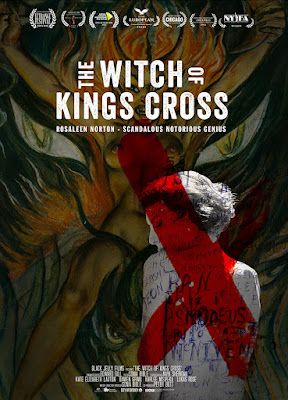




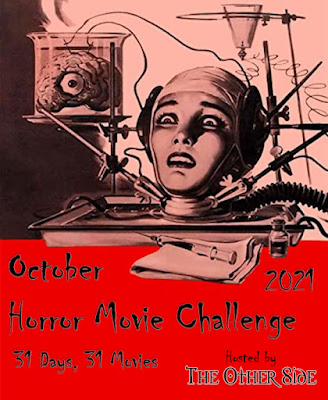






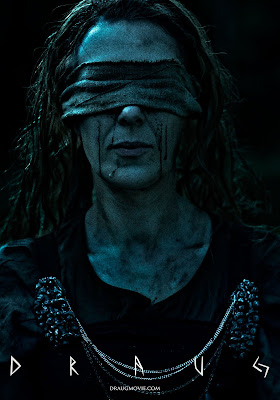


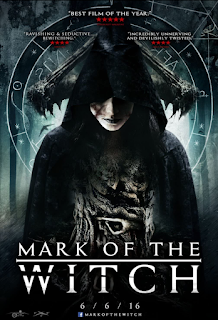

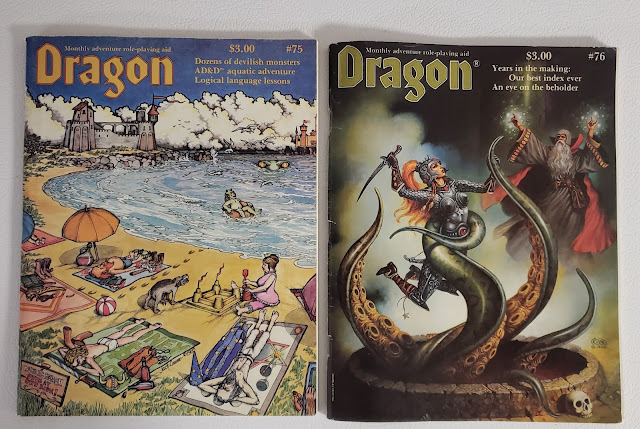
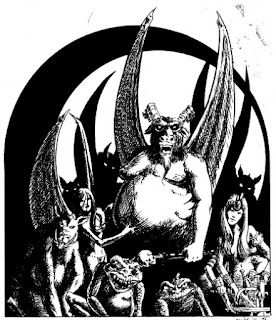

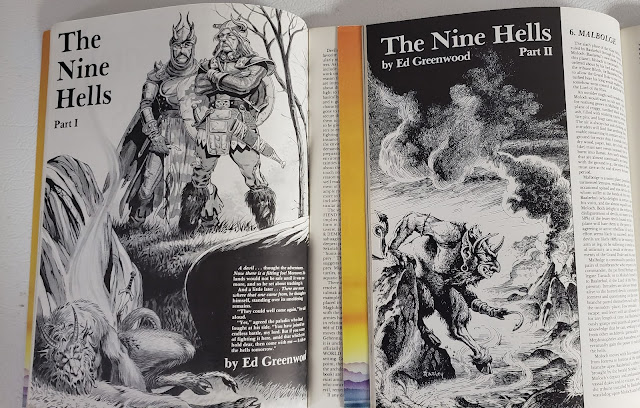
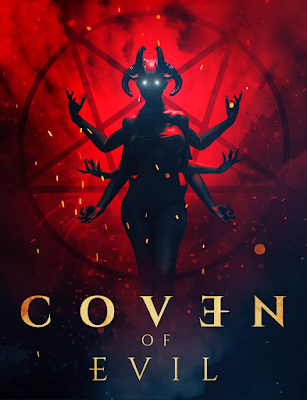
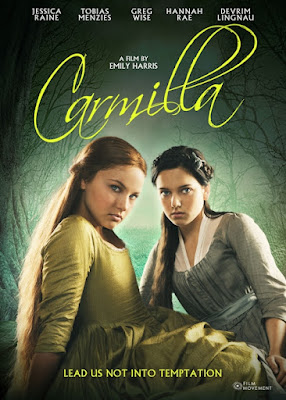

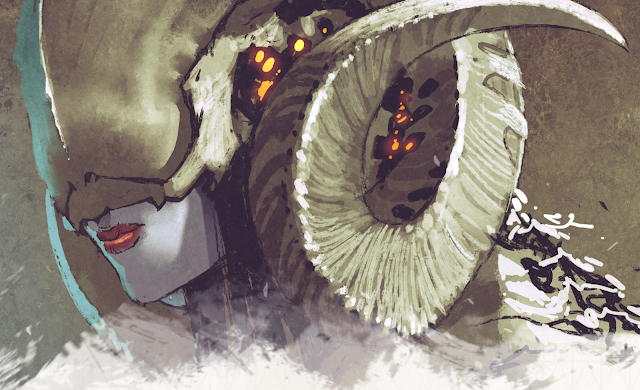

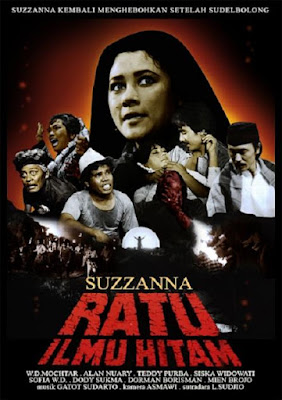
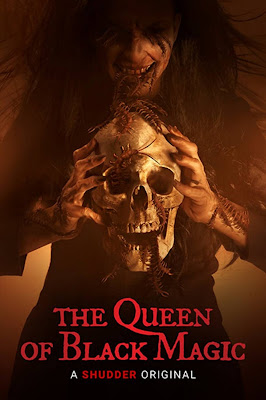

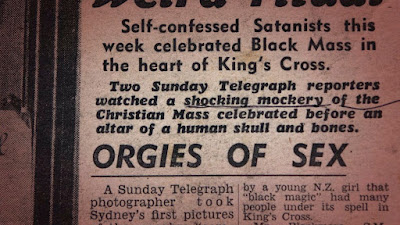
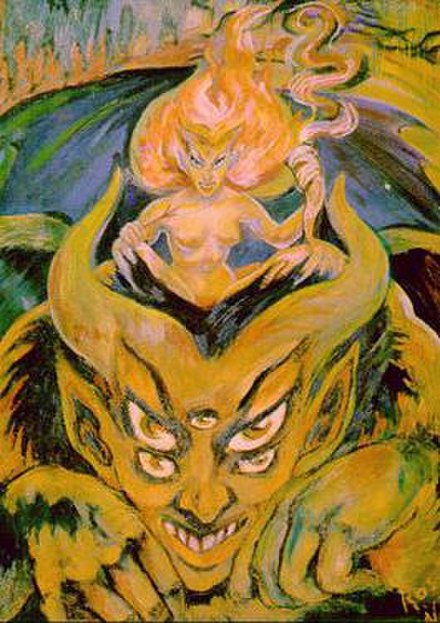
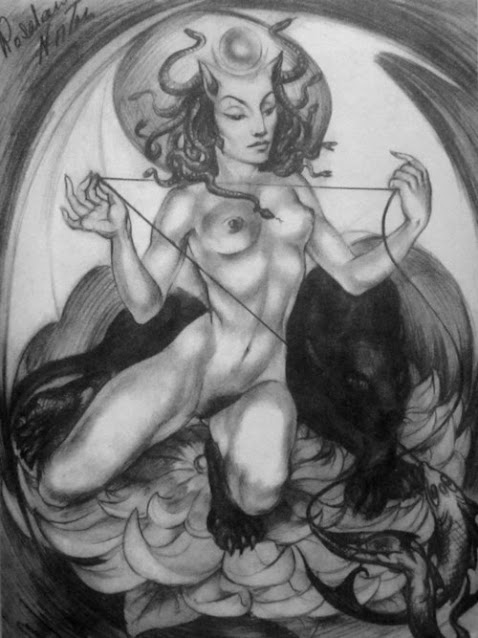
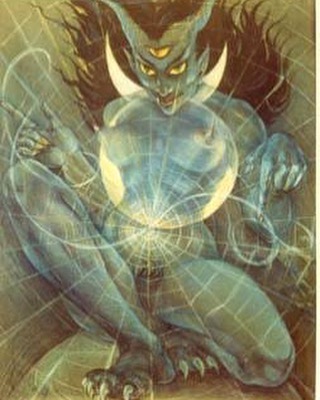

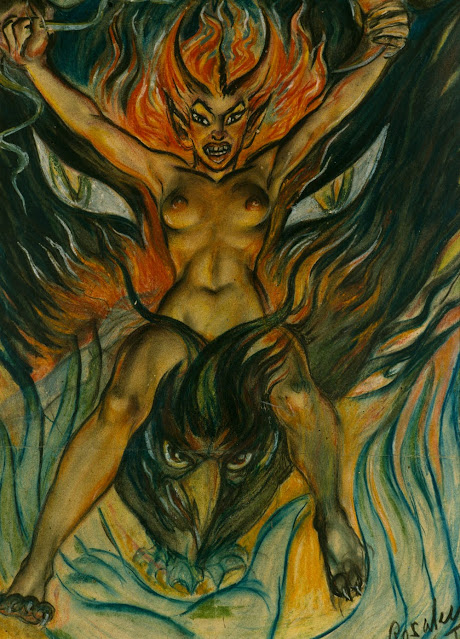

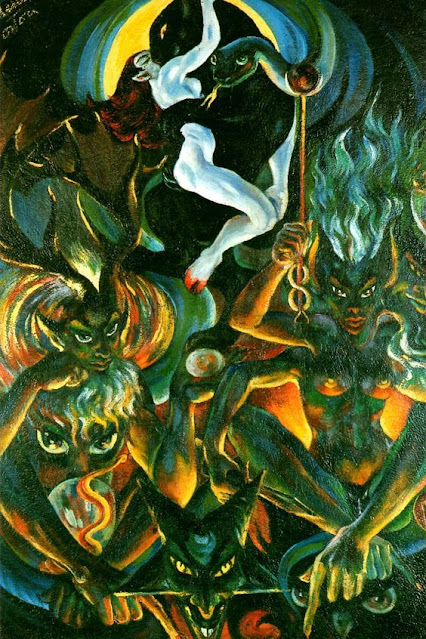
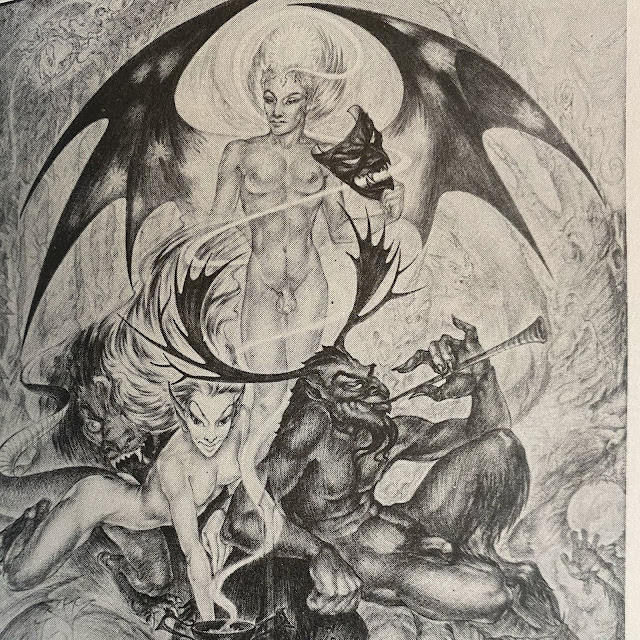
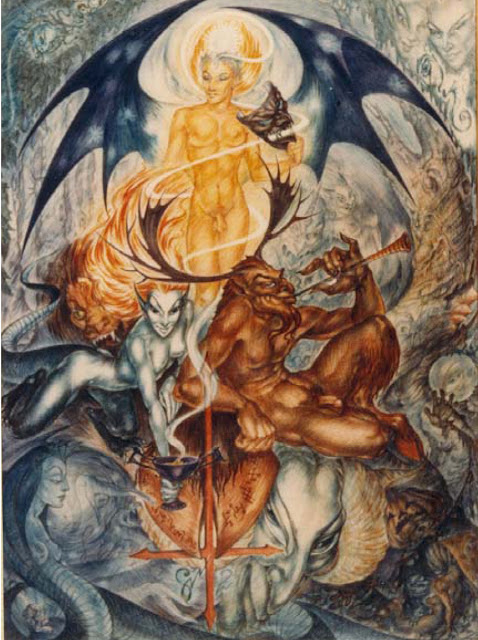
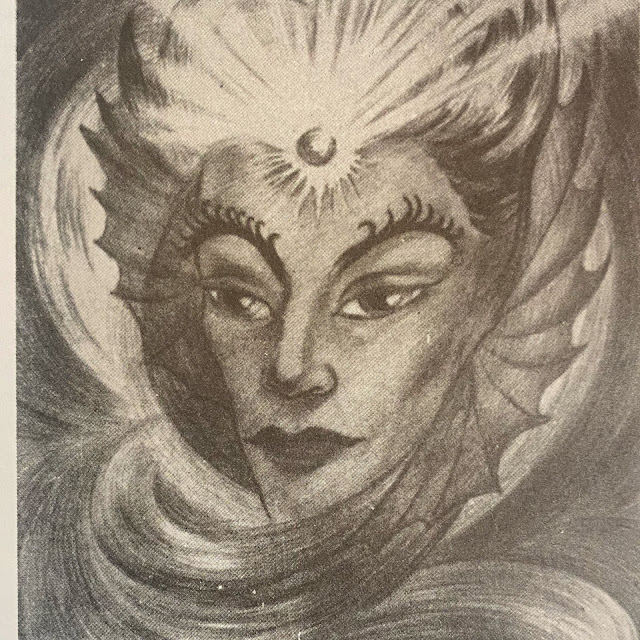
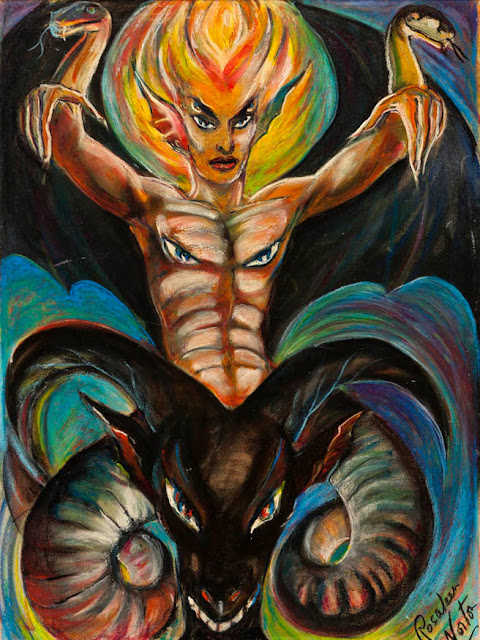
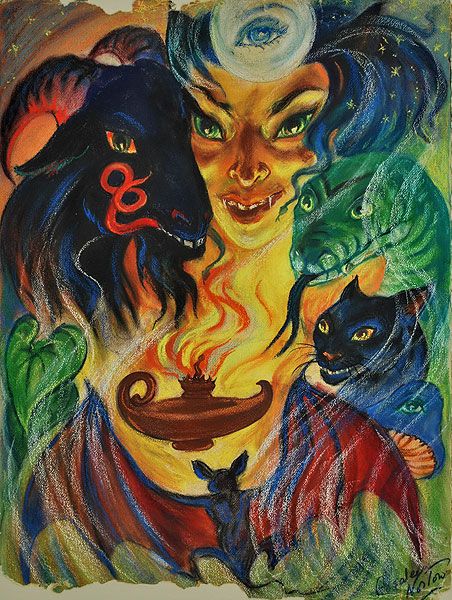

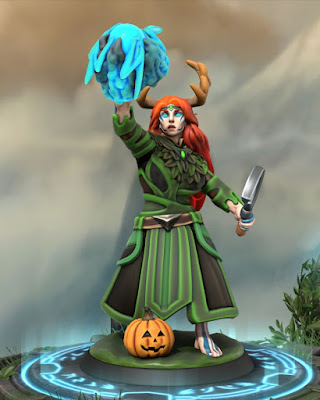

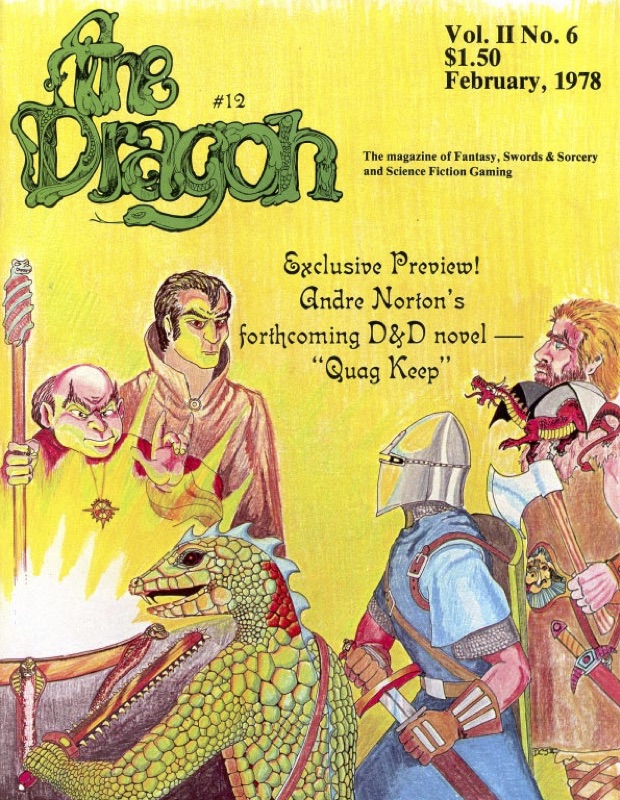
 Articles
Articles
